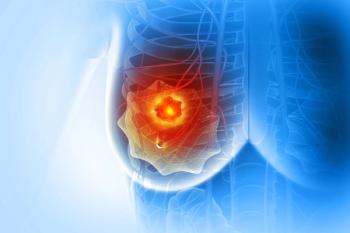
ASHP Midyear: Opioid Use Disorder in Critically Ill Patients Has Unique Challenges
Key Takeaways
- Pharmacists are essential in educating healthcare providers about OUD treatment options, especially in critical care settings, enhancing patient management and safety.
- Buprenorphine is preferred for OUD due to its safety profile, with various formulations requiring careful consideration based on patient and institutional needs.
In hospital and critical care settings, pharmacists can play a significant role in educating other health care providers about treatment options, proper dosing, and more.
Although there is a growing body of research and treatment options for opioid use disorder (OUD), managing patients in critical or intensive care facilities presents unique challenges, according to presenter Brian L. Erstad, PharmD, in a session at the American Society of Health-System Pharmacists 2024 Midyear meeting.1
“There are definitely a lot more questions that we don’t know the answers to than [questions] we do [know the answers to],” Erstad said.1
In outpatient or community settings, pharmacists often identify and screen patients for OUD risk, refer to treatment and support programs, and ensure medication and naloxone access.2 In hospital and critical care settings, however, pharmacists can play an even greater role in educating other health care providers about treatment options, proper dosing, and more.
OUD is a treatable chronic disease, although it causes many deaths due to high-potency synthetic opioids such as fentanyl and carfentanil. Importantly, Erstad noted that a growing number of walk-in clinics are initiating medications for OUD (MOUD), and increasing numbers of patients are being seen in emergency departments for precipitated withdrawal after receiving naloxone from emergency medical services or law enforcement.1
Notably, Erstad said the X-waiver requiring additional training for clinicians to prescribe buprenorphine for OUD has been removed, so any qualified practitioner is able to prescribe it.1
“I have to admit that the curve hasn’t been as dramatic as I thought it would be after the removal of the X-waiver…but no doubt we’ll start seeing more patients [in critical care environments],” Erstad said.1
Although buprenorphine was the primary focus of Erstad’s presentation, he did provide some basic information about methadone and naltrexone. Methadone has the longest history of study for OUD, with doses for outpatient stabilization of OUD ranging from 80 mg to 120 mg. Data do suggest that methadone is beneficial as a long-term, stable MOUD. Key challenges include substantial interindividual variability in kinetics and dynamics, potential drug-drug interactions with CYP3A4, and an FDA black box warning for cardiotoxicity.1 In hospital settings, Erstad said clinicians will most likely only encounter naltrexone in patients who have been taking it prior to their admission and it may not require any changes.1
Buprenorphine is a partial agonist at the mu opioid receptor with high affinity and low intrinsic activity. As a partial agonist, it has reduced abuse potential, a lower level of physical dependence, a ceiling effect at higher doses, and greater safety in overdose.3
“This is the one, for the most part, I think patients should be going on,” Erstad said.1
Importantly, there are many formulations of buprenorphine, including intramuscular (IM), intravenous (IV), buccal, transdermal, subcutaneous (SC) extended release, and sublingual. However, Erstad said the IV formulation is the most commonly used in critical care environments.1
Each formulation has its own challenges and should be considered individually. Erstad encouraged pharmacists to look for information specific to the brand and formulation they are using, as opposed to general information on buprenorphine. For instance, Zubsolv (Orexo) and Suboxone (Indivior) both contain naloxone, as opposed to other formulations that do not.1
“Just realize there’s a lot of different kinetic and dynamic issues, and it’s going to be very product-specific,” Erstad said. “And it’s going to be very formulary-dependent…you’ll just have to go to your specific institution and whatever they have on the formulary.”1
One challenge with the IV formulation of buprenorphine (Buprenex; Reckitt Benckiser) is limited doses. Although much higher doses of IV buprenorphine have been studied, the dose labeling is limited to 0.3 mg/mL.1
“[Buprenorphine] was used for quite a while, then it fell out of favor,” Erstad said. “And now that it’s coming back we’re running into some of these issues.”1
Many different dosing regimens have been studied, depending on the formulation and patient characteristics. For patients in mild to moderate withdrawal, Erstad said addiction specialists are starting to use more high-dose buprenorphine regimens, although standard dosing is typically around 2 mg to 8 mg with sublingual.High-dose regimens, on the other hand, can start with 8 mg to 16 mg and increase up to 32 mg.1
“The key there is often you can stabilize a person relatively quickly, often within a few hours, and then if needed you can give them more buprenorphine,” Erstad said.1
The majority of studies involving hospitalized patients receiving buprenorphine have used low-dose regimens, but these also have their own obstacles. For instance, to obtain doses as small as 0.5 mg, clinicians often have to cut sublingual doses in half or cut tablets. Often, these patients are receiving high-dose opioids for pain management, so clinicians try to do a cross-taper to avoid precipitated withdrawal.1
Pharmacists possess a unique skillset that can significantly improve the management of OUD in the critically ill patient population. By collaborating closely with physicians, nurses, and other health care providers, pharmacists can optimize medication regimens, monitor for increased or reduced dosing needs, and provide crucial information on safe OUD management.
REFERENCES
1. Erstad BL. Medications for Opioid Use Disorder in Critically Ill Patients. Presented at: American Society of Health-System Pharmacists 2024 Midyear meeting. New Orleans, LA. December 8, 2024.
2. Mohammad I, Berri D, Lehr VT. Pharmacists and opioid use disorder care during COVID-19: call for action. J Am Coll Clin Pharm. 2021;5(2):203-213. doi:10.1001/jac5.1556
3. What is buprenorphine? UAMS Psychiatric Research Institute. Accessed December 8, 2024. https://psychiatry.uams.edu/clinical-care/outpatient-care/cast/buprenorphine/
Newsletter
Stay informed on drug updates, treatment guidelines, and pharmacy practice trends—subscribe to Pharmacy Times for weekly clinical insights.














































































































































































































